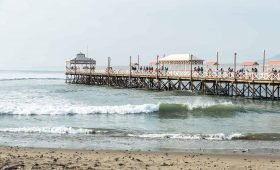Borobudur Temple: A Journey Through Time in Indonesia
History and Cultural Significance
Borobudur Temple is an iconic Buddhist monument located in Central Java, Indonesia. Constructed in the 8th and 9th centuries, it stands as a remarkable example of ancient Javanese architecture. Built during the reign of the Sailendra Dynasty, this UNESCO World Heritage Site is a testament to the region’s rich cultural and religious history.
The temple is designed as a massive mandala, symbolizing the universe in Buddhist cosmology. It consists of three levels: a pyramidal base with five concentric square terraces, a trunk of a cone with three circular platforms, and a monumental stupa at the top. The walls and balustrades are adorned with intricate low reliefs, covering a total area of 2,500 square meters. These carvings depict various scenes from Buddha’s life and teachings, offering a visual narrative of the path to enlightenment.
Getting There
Traveling to Borobudur Temple is straightforward. The nearest major airport is Adisucipto International Airport in Yogyakarta, approximately 40 kilometers away. From there, you can hire a taxi or take a local bus to the temple complex. For those seeking a bit more adventure, renting a motorbike is an option, but be sure to adhere to local traffic laws and wear a helmet for safety.
Best Time to Visit
The ideal time to explore Borobudur Temple is during the dry season, from April to October. During these months, the weather is generally pleasant, with mild temperatures and minimal rainfall. Visiting during the rainy season can be challenging due to heavy downpours that may disrupt your exploration.
To avoid the crowds, consider visiting early in the morning or late in the afternoon. This timing not only provides a more serene experience but also allows you to witness the temple in the soft light of sunrise or sunset.
Exploring the Temple
Guided Tours
Engaging a knowledgeable guide can greatly enhance your visit to Borobudur Temple. Guides offer valuable insights into the temple’s history, symbolism, and architectural features. They can help you navigate the complex layout and ensure you don’t miss any significant details.
Sunrise and Sunset Views
Experiencing the sunrise or sunset from Borobudur is unforgettable. The elevated platforms provide panoramic views of the surrounding landscapes, with Mount Merapi as a stunning backdrop. Arrive early to secure a good spot and prepare to be captivated by the vibrant colors of the sky.
Local Customs and Etiquette
While visiting Borobudur Temple, it’s important to respect local customs and the site’s religious significance. Dress modestly, covering your shoulders and knees. Removing your shoes before entering the temple is customary, so wear footwear that is easy to take off and put back on.
Maintain a quiet and contemplative demeanor within the temple complex. This respect not only honors the sacredness of the site but also enhances your personal experience of its tranquility.




